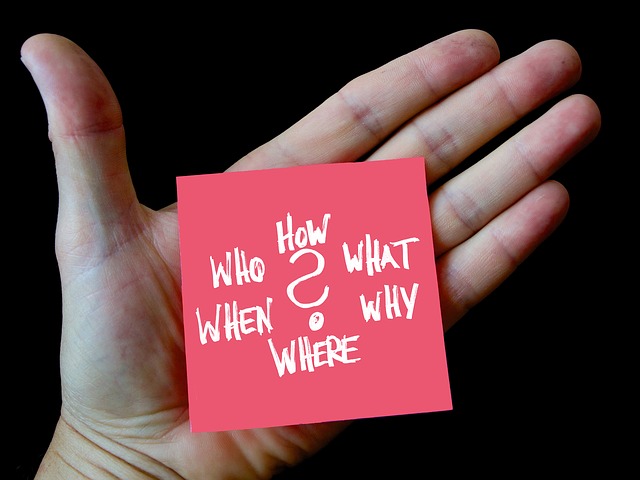How to Write an SEO Friendly Blog Post
September 13, 2017 •tanmay

Whether you’re a blogger, a writer, or you run a website that publishes blogs to try and improve knowledge about your business; Google is where most, if not all of your traffic will come from. While some traffic may come from social media or internal links from other similar websites; it is Google that will make or break the popularity of your website.
If you aren’t optimising your blog posts for search engines like Google, then you need to start today! SEO, or ‘Search Engine Optimisation’ is the most important tool you have when it comes to getting your blog or your website traffic, and it is imperative that you are optimising your blog posts correctly to ensure that you are giving your site the best chance of receiving high-quality visitors who are interested in what you have to say.
So, whether you have never written an SEO-friendly blog post before, or this is your first foray into the world of search engine optimisation, here are seven tips to get your content fighting fit and ready to top the ranks on any search engine.

Before you even begin writing an SEO-friendly blog post, it is vital that you sit down and figure out who your target audience is, and what type of content they are looking for in a blog post. If you run a hair salon, then your potential customers are probably much more interested in the latest hairstyles and beauty products than a new model of car or motorbike. If people are genuinely interested in your content, then they are much more likely to hang around and see what other content you are producing. If search engines see people repeatedly coming back to your website, then it registers that your content is valuable and will improve your rankings. Find out a few keywords
Once you have a theme or a topic picked out, it’s important to think about the type of words that people would be searching for to find your content. These words then need to be included in your blog post so that the search engine knows what is relevant and can offer your blog as a search result that someone might be interested in. There are free tools such as Google Keyword Planner which will help you find the most relevant keywords.
You should have one main keyword, and then around 4 or 5 long-tail keywords (longer, three or four keyword phrases which are extremely specific to what your blog is about). Once you have picked your keywords, you also need to know where to put them in your article, so here is a brief overview:
Use your main target keyword once in your title (keep your title short as Google only shows around 50 or 60 characters), and then use it sporadically throughout the article or blog; use your long-tail keywords in your subheadings if possible, but avoid overusing your keywords in headings as Google may penalise you.


Not only are they useful for structuring your blog post and keeping you from waffling on for too long, but headings are also used for search engine optimisation as they break your content down into easy to read sections. Using heading formats like H1, H2, H3, allows Google to understand and interpret each of your subtopics, which in turn helps to improve your overall rankings. H1 is used for the title of your post, whereas each subtopic is identified by H2, and then H3 if you need to break it down even further. Use internal links
So, you’ve got your topic, you’ve got your keywords, and you’ve got your headings, now you need to include a few internal links within your blog to add a bit of credibility to your post. Always make sure that you are linking to around 2 or 3 other relevant blog posts elsewhere on your blog as this improves your SEO score, and also increases the chances of visitors reading a few of your articles in one go.


It may sound like some fancy term for IT specialists, but meta-data or meta-descriptions are actually pretty easy to get your head around. When you publish a blog and it appears as a search result on Google, there are always one or two lines of text under the title to give the visitor a bit of info about the blog before they click on the link that brings them there. These short descriptions are called meta-descriptions, and they are extremely important to your place on the rankings.
These meta-descriptions must be kept to 150 characters or less, and need to be written in complete and meaningful sentences. It’s helpful to include your main target keyword and at least one long-tail keyword here if you can.Don’t forget about images
Once your keywords, meta-descriptions, and links are in place, you can make your blog post enticing by adding media such as videos and pictures to make it aesthetically pleasing and to add an interactive element to your blog post. An area that is often overlooked when writing a blog post, image SEO is very important and easy! Because search engines only read text, images need to be coded so that they can be understood by the likes of Google, and this is where image optimisation comes in. When you add an image, you need to make sure that you have given it a descriptive file name, instead of a random string of letters or numbers, and you can even add long-tail keywords to boost your SEO. As well as descriptive file names, ‘alternative text’ is also an important field to fill in, and is used to describe what is happening in your image.


When it comes down to it, you can have the most perfectly optimised blog post in the entire world that ranks at the top of Google, but if you don’t have great content to back it up, then the whole exercise is kind of pointless, isn’t it? First and foremost, you should have a great article or blog, and then work your search engine optimisation around this great, well-written content. If your visitors find it engaging and entertaining, then not only will they come back for more, but they will also tell their friends and share your blog with like-minded individuals
If you would like more information then please get in touch with The Bright Click today. We have a team of experienced designers, web developers, digital marketers and SEO specialists who would love to work with you & your business.
The Bright Click – 0208 614 3296
Featured Articles
Categories
- advertising (2)
- Adwords (6)
- AFC Bournemouth (1)
- B2B (2)
- baby (1)
- Back to Gym (1)
- BBC (1)
- Beautiful South (1)
- blog (1)
- Blog Posts (64)
- Blogging (8)
- BLogs (1)
- Brand Visibility (1)
- Business (37)
- Business TImeline (6)
- Care Home Website (1)
- Chance (1)
- charity (1)
- Check-In (1)
- Cover Image (1)
- Customer Engagement (10)
- customer service (7)
- Design (2)
- Digital Marketing (18)
- Email (5)
- Estate Agent Social Media Marketing (3)
- Facebook (32)
- SEO (4)
